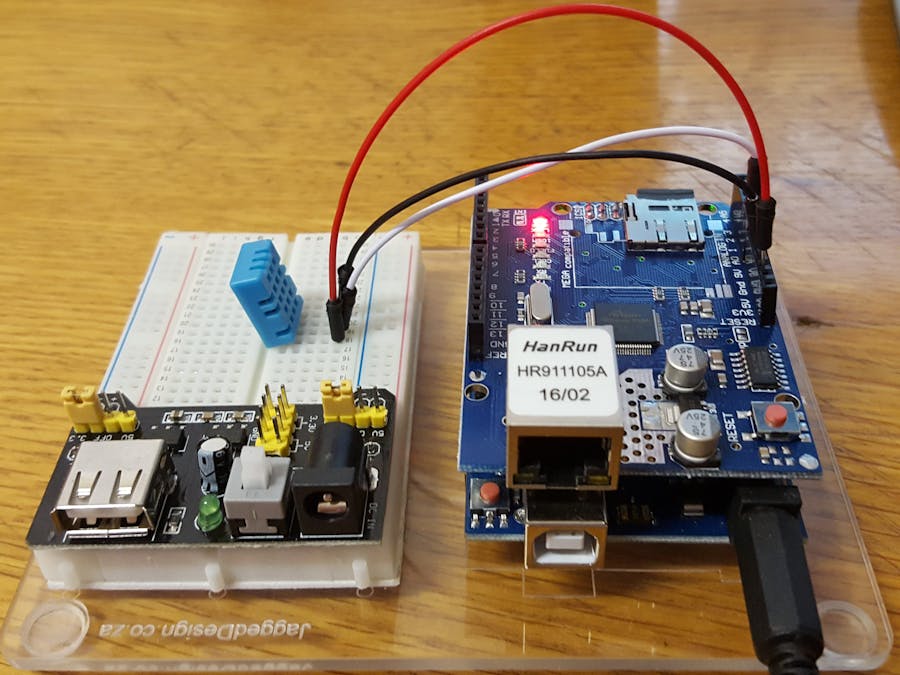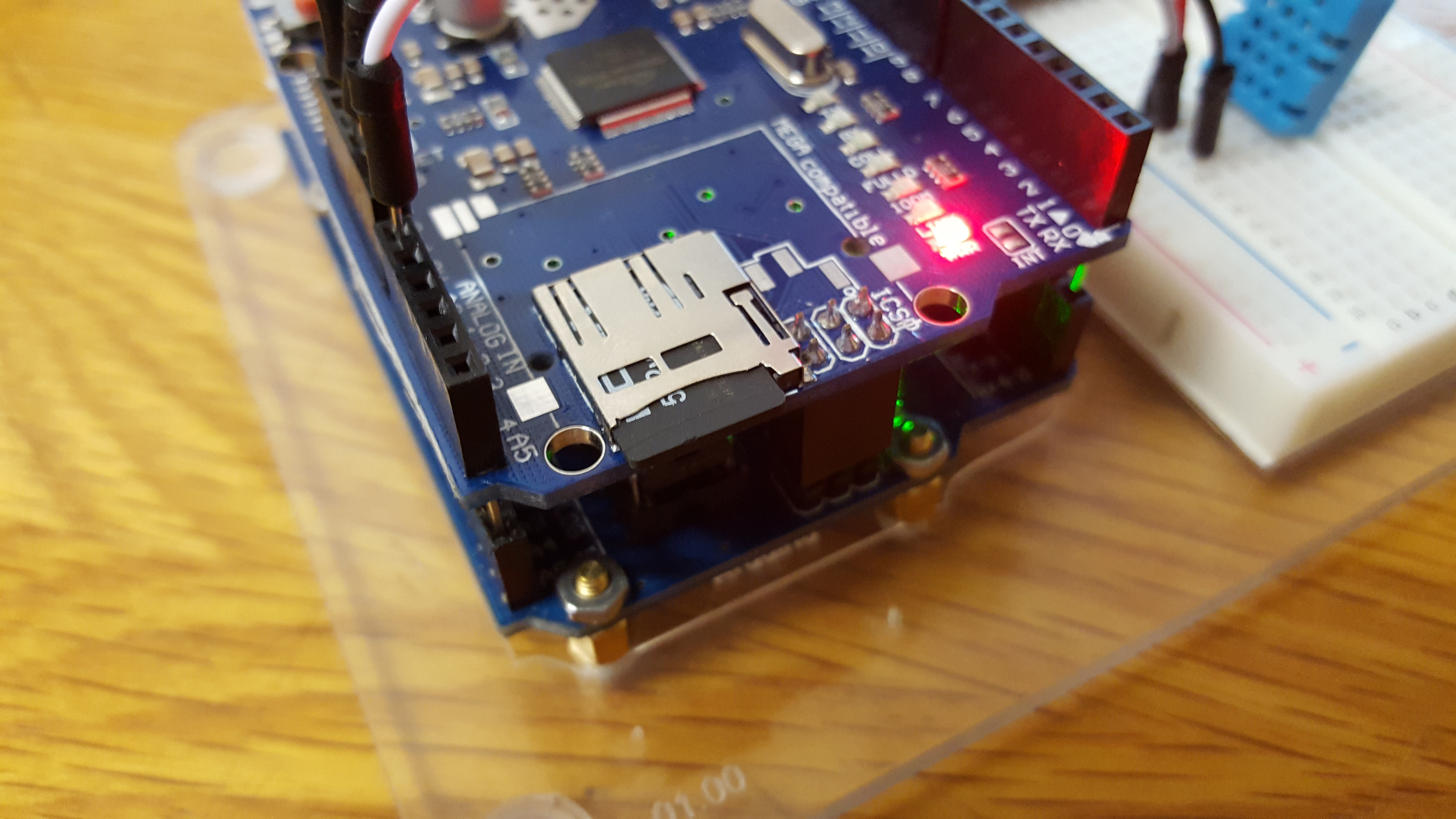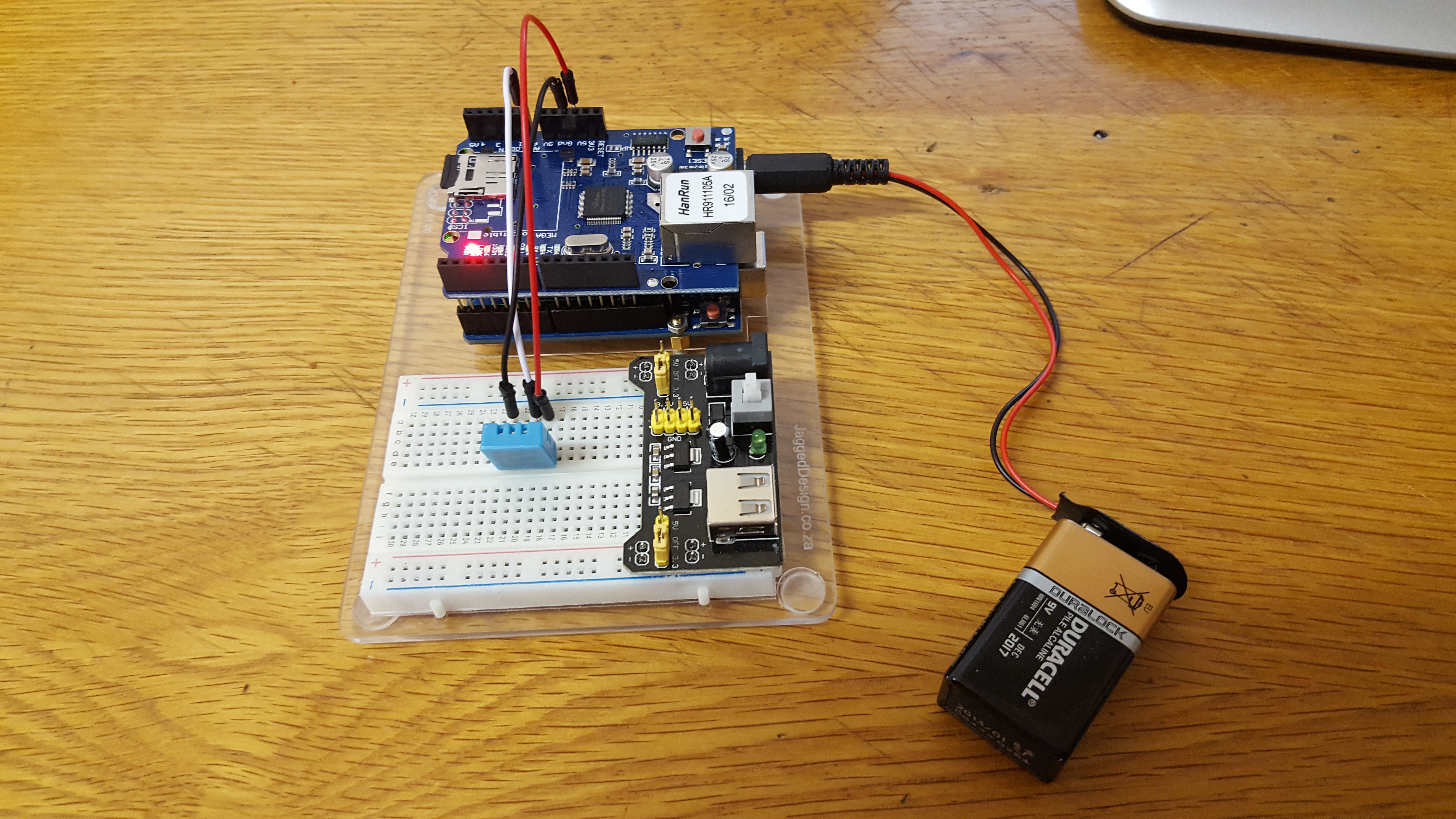I have been experimenting with Arduino Microcontroller for a few weeks now and only built simple circuits with LED's and stuff. I wanted to build my first projects that can be useful to do something and I decided to build a data logger for temperature and humidity. Although this is a fairly straight forward circuit the code can be quite tricky (for someone on my level. Lol).
How we did itThe first step is to assemble your Arduino Uno and the Ethernet Shield and build the following circuit with your components as shown below.
Once the circuit is finished, make sure the SD-card is formatted and inserted on the Ethernet shield.
You can now upload the code shown below to you. Arduino and the sensor will start measuring the temperature and humidity. The Arduino will create a DATALOGGER.TXT file on the SD-card. Once the power is disconnected the datalogger will stop and continue again once the power is restored.
Should the measuring be longer that 1 or 2 hours, I would suggest using a permanent power source like a "wall wart" to make sure the battery does not drain and you lose critical data.





_ztBMuBhMHo.jpg?auto=compress%2Cformat&w=48&h=48&fit=fill&bg=ffffff)













Comments